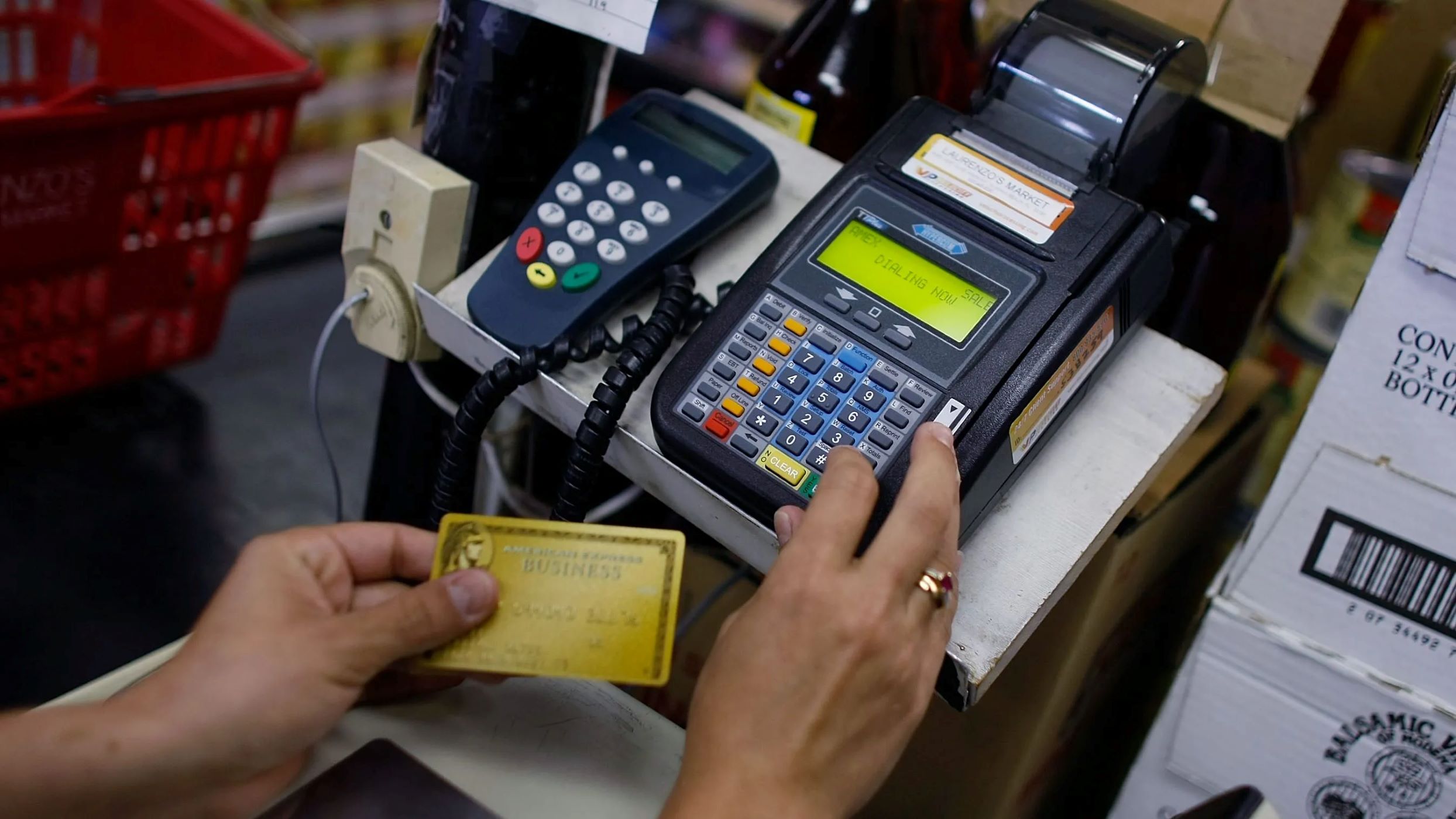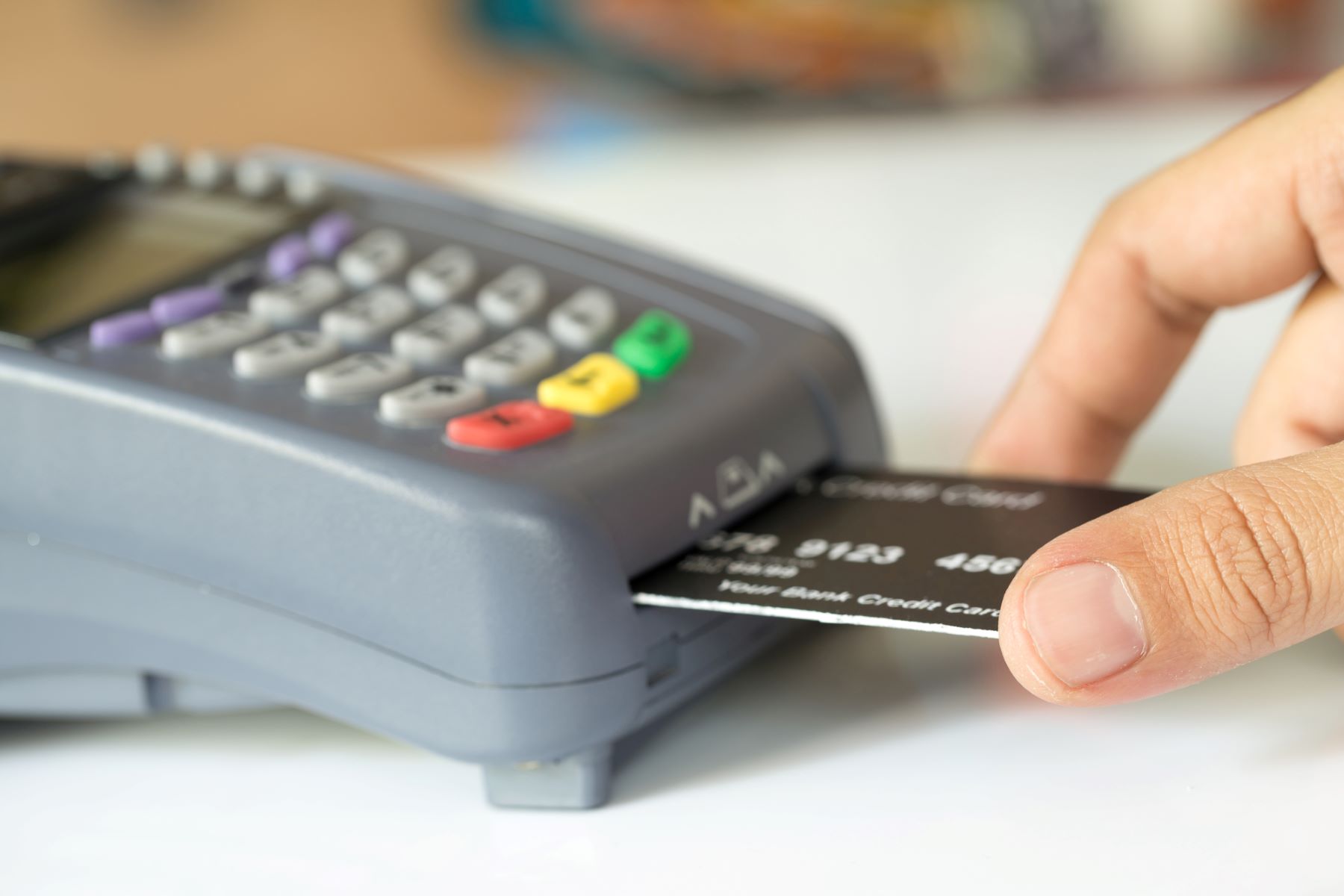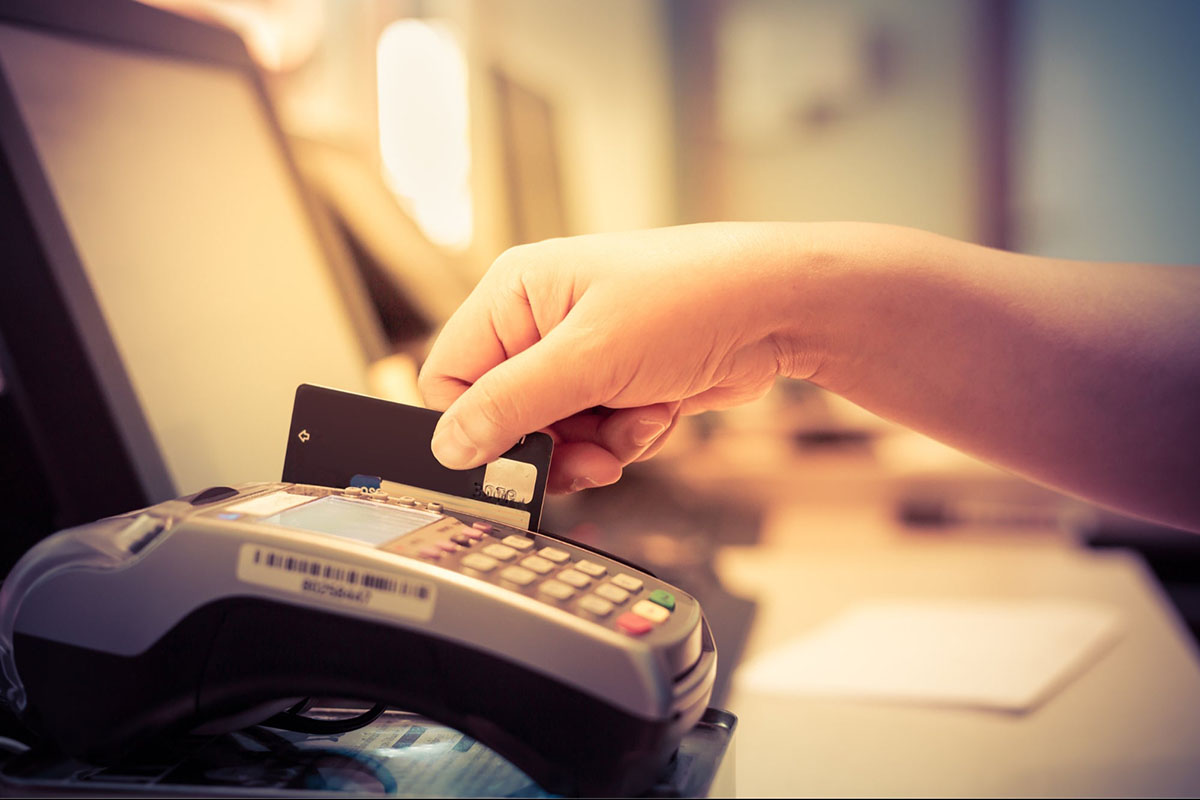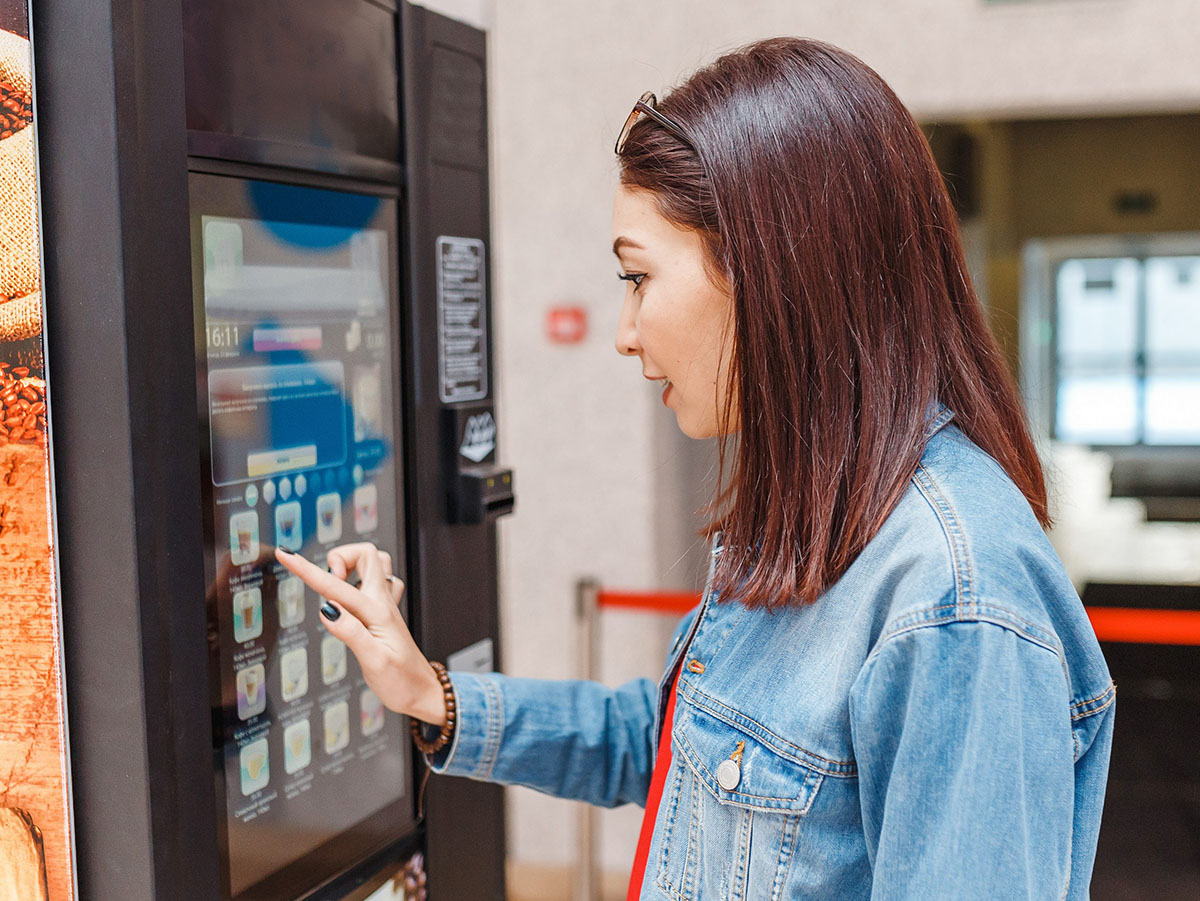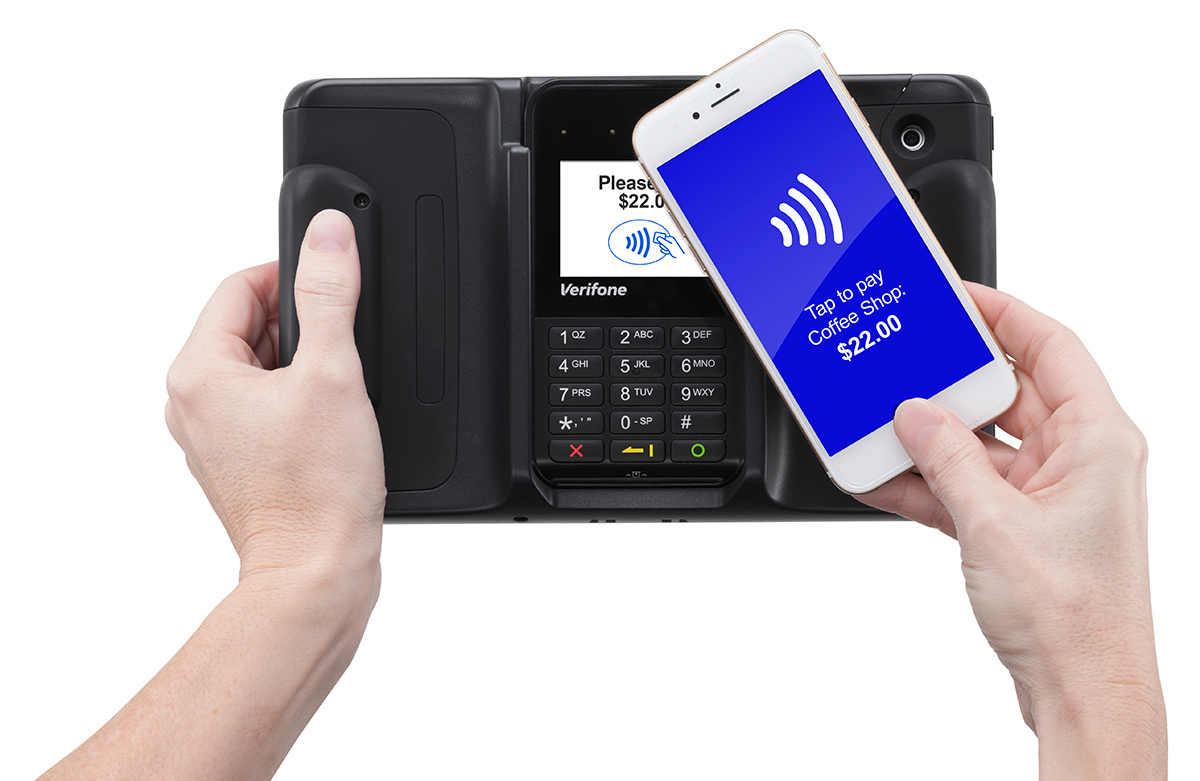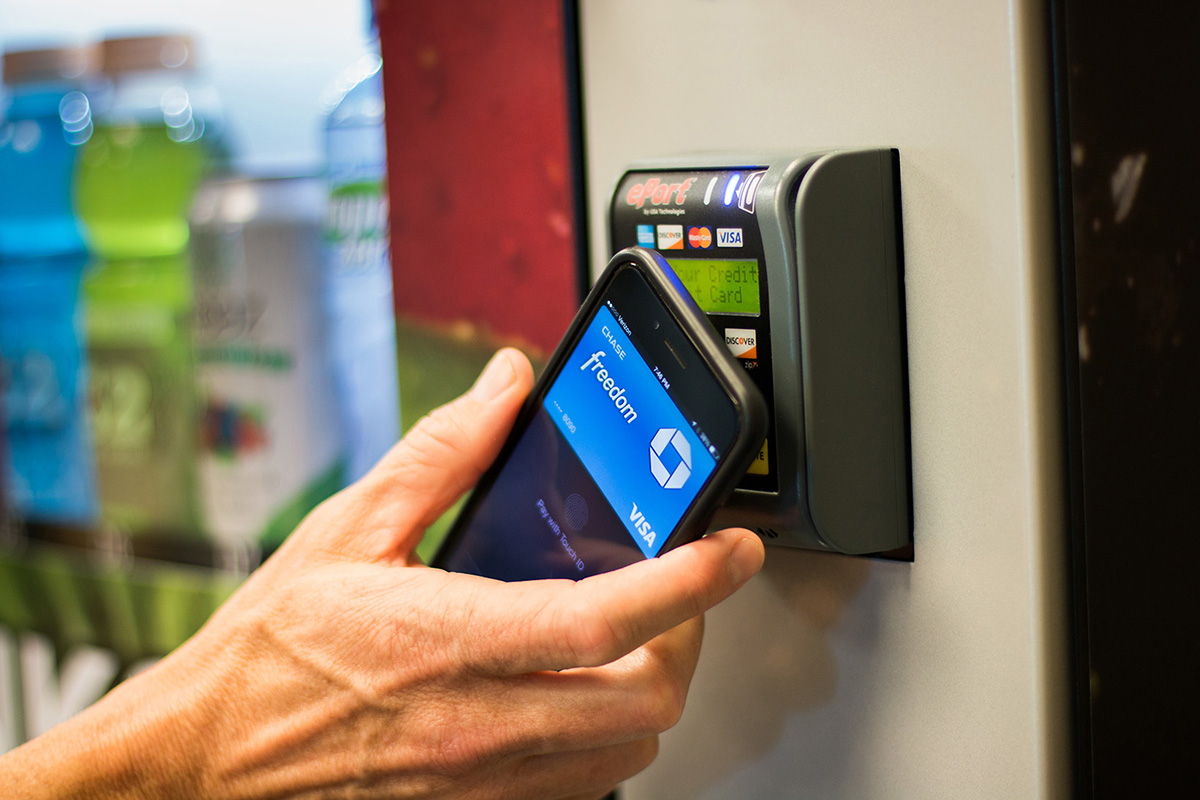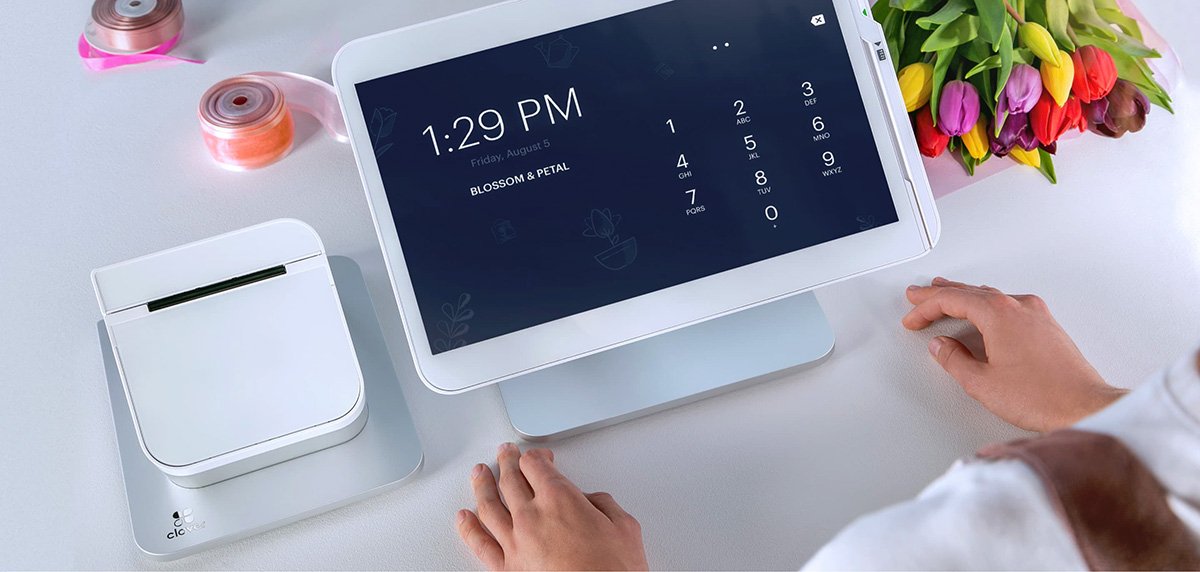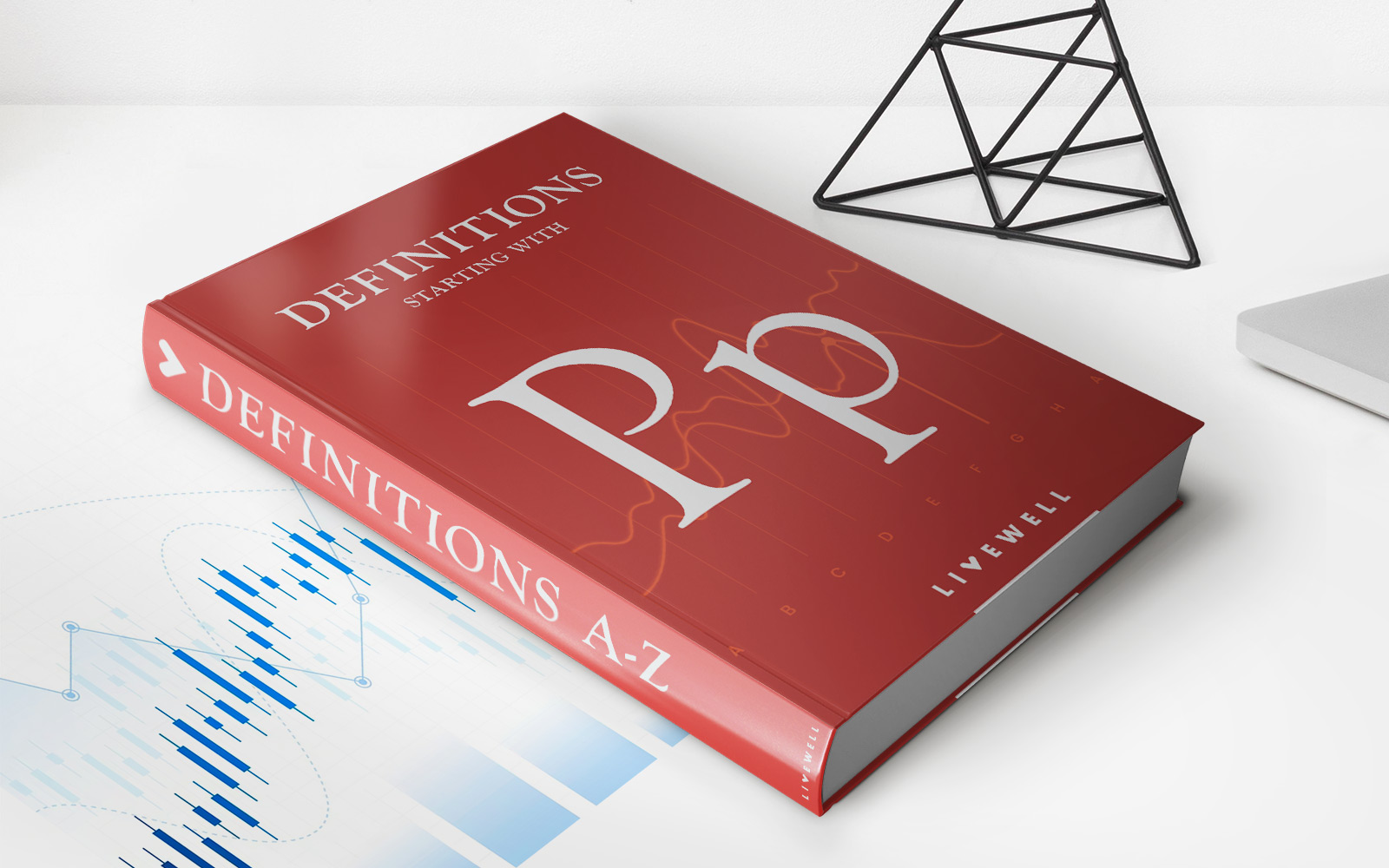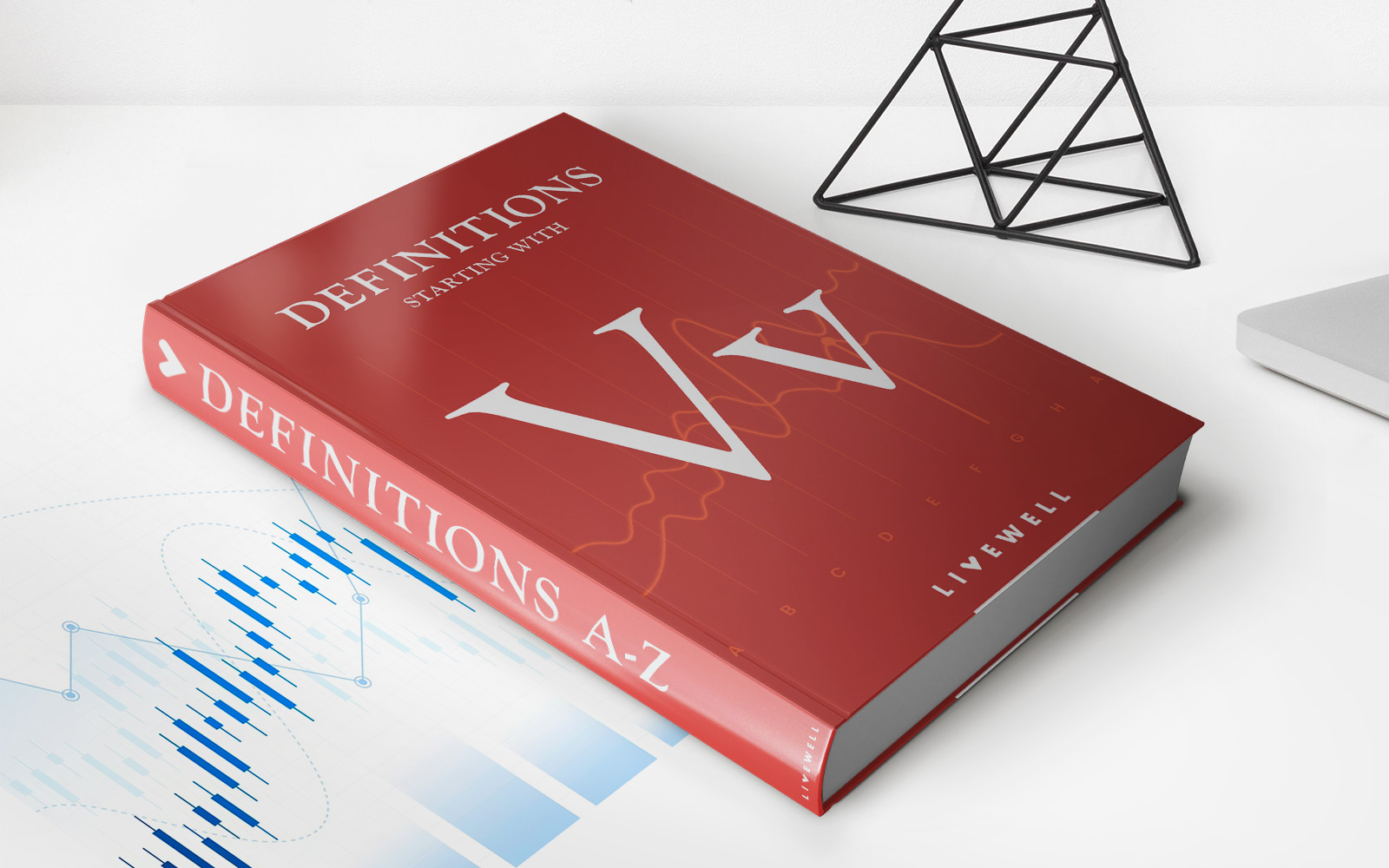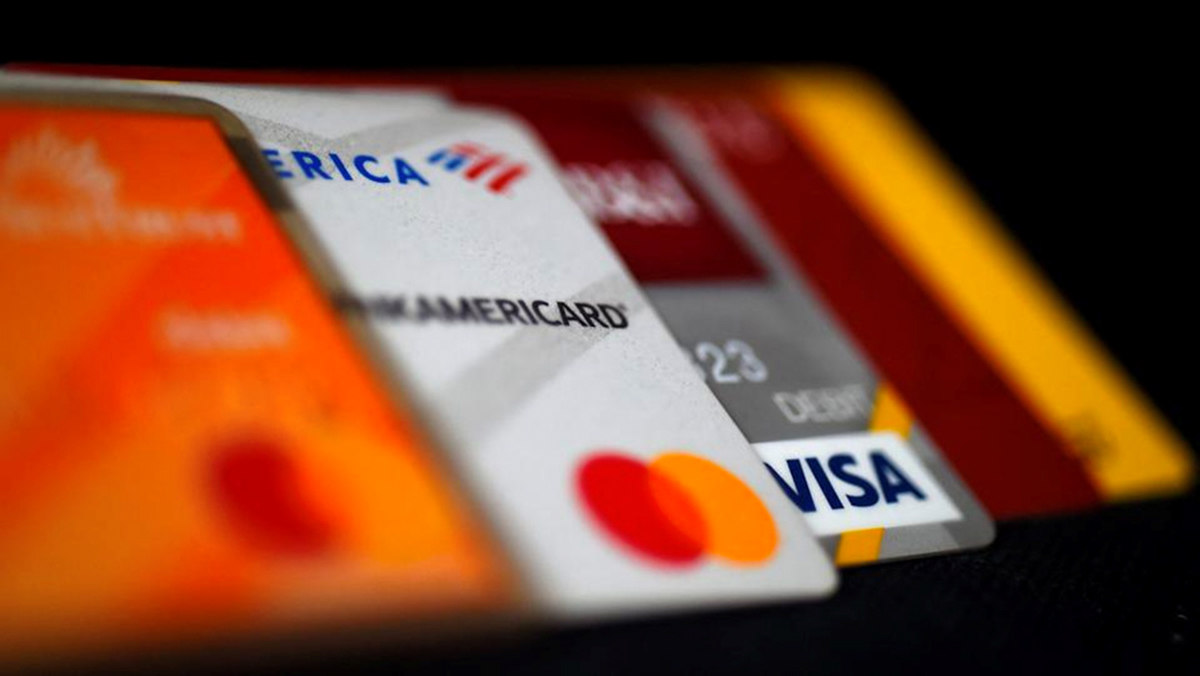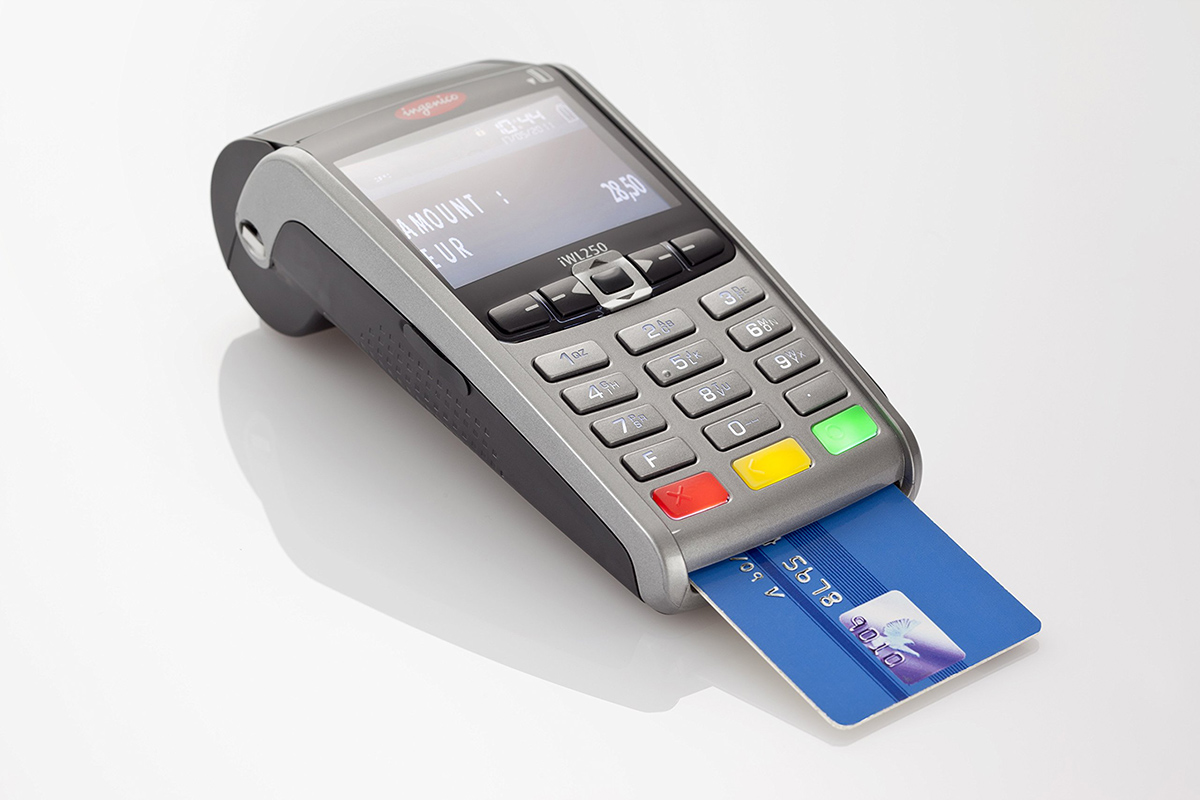

Finance
How To Get A Credit Card Machine
Modified: December 29, 2023
Learn how to obtain a credit card machine for your business and streamline your financial transactions. Explore finance options to improve your payment processing today.
(Many of the links in this article redirect to a specific reviewed product. Your purchase of these products through affiliate links helps to generate commission for LiveWell, at no extra cost. Learn more)
Table of Contents
- Introduction
- Understanding Credit Card Machines
- Types of Credit Card Machines
- Point of Sale Terminals
- Mobile Credit Card Machines
- Virtual Credit Card Machines
- Factors to Consider When Choosing a Credit Card Machine
- Compatibility with Payment Processors
- Security Features
- Cost and Pricing
- Set-Up and Installation Process
- Customer Support and Maintenance
- How to Apply for a Credit Card Machine
- Research Different Providers
- Compare Features and Pricing
- Gather Necessary Documentation
- Submit Application
- Wait for Approval
- Conclusion
Introduction
Welcome to our comprehensive guide on how to get a credit card machine! In today’s digital age, businesses of all sizes rely on credit card payments to streamline transactions and provide convenience to their customers. Whether you run a brick-and-mortar store, an e-commerce business, or a service-based company, having a reliable credit card machine is essential.
Understanding credit card machines and the different types available in the market can be overwhelming. With so many options to choose from, it’s crucial to have a clear understanding of your business needs and the factors to consider when selecting a credit card machine. This article will walk you through the process of getting a credit card machine, from understanding the different types available to applying for one that suits your business requirements.
By the end of this guide, you’ll have a solid understanding of what credit card machines are, how they work, and the steps involved in getting one for your business. So, let’s dive in and explore the world of credit card machines!
Understanding Credit Card Machines
Credit card machines, also known as point of sale (POS) terminals, are electronic devices that enable businesses to accept payments from customers using credit or debit cards. These machines facilitate secure and efficient transactions by connecting to the payment networks to authorize and process payments in real-time.
When a customer makes a purchase using their credit or debit card, the credit card machine reads the card’s information and securely transmits it to the payment processor. The payment processor then communicates with the cardholder’s bank to verify the transaction and ensure that the funds are available. Once authorized, the payment is processed, and the customer receives a printed or emailed receipt.
Modern credit card machines offer various features such as contactless payments, EMV chip card acceptance, and near-field communication (NFC) capabilities. These advancements increase convenience and security by allowing customers to tap their cards or use mobile wallets like Apple Pay or Google Pay.
Understanding the different types of credit card machines is crucial when deciding on the best option for your business. The three main categories of credit card machines are point of sale terminals, mobile credit card machines, and virtual credit card machines. Each type caters to different business setups and requirements.
Knowing these distinctions will help you choose the most suitable credit card machine for your business needs. Let’s dive into the details of each type to gain a better understanding.
Types of Credit Card Machines
When it comes to credit card machines, there are three main types to consider: point of sale terminals, mobile credit card machines, and virtual credit card machines. Each type offers unique features and benefits, catering to different business setups and needs.
1. Point of Sale Terminals: Point of sale (POS) terminals are the traditional credit card machines you typically see in retail stores or restaurants. They consist of a hardware device that connects to a central system and processes payments. These terminals usually have a built-in keypad and display for the transaction process and can accept different payment methods, including credit and debit cards, mobile wallets, and even checks in some cases.
POS terminals come with various connectivity options such as Ethernet, Wi-Fi, or Bluetooth, allowing them to integrate with your business’s point of sale system and other hardware devices like cash registers and barcode scanners. They offer advanced security features such as data encryption, PCI compliance, and EMV chip card acceptance, providing peace of mind for both merchants and customers.
2. Mobile Credit Card Machines: Mobile credit card machines, also known as mPOS (mobile point of sale) devices, have gained popularity in recent years. These compact and portable devices connect wirelessly to smartphones or tablets, transforming them into a mobile payment terminal. Mobile credit card machines are perfect for businesses on the go, such as food trucks, delivery services, or pop-up shops.
With a mobile credit card machine, you can accept payments anywhere with an internet or cellular connection. They typically use a mobile app that securely processes transactions and sends electronic receipts to customers via email or text message. Many mobile credit card machines also support additional features like inventory management, sales reporting, and on-the-spot invoicing.
3. Virtual Credit Card Machines: Virtual credit card machines, also known as payment gateways, are entirely software-based solutions that allow businesses to accept payments online. These virtual terminals can be accessed through a web browser, providing convenience for e-commerce businesses, service providers, or those who primarily operate in the digital space.
Virtual credit card machines securely collect payment information through an online form, allowing customers to enter their credit card details and complete the transaction. These solutions often support recurring billing, customizable payment forms, and integration with popular e-commerce platforms. They also provide additional security measures like tokenization and fraud detection to safeguard sensitive customer information.
Understanding the different types of credit card machines will help you determine which one best suits your business model and needs. In the next sections, we will explore the factors you should consider when choosing a credit card machine and the steps involved in acquiring one for your business.
Point of Sale Terminals
Point of sale (POS) terminals are the traditional and widely used credit card machines found in retail stores, restaurants, and other businesses that have a physical location. These devices are specifically designed to handle in-person transactions and offer a range of features to streamline the payment process.
POS terminals typically consist of a hardware device with a built-in keypad, display screen, and card reader. They are connected to a central system, allowing businesses to manage and process transactions efficiently. Here are some key features and benefits of point of sale terminals:
- Wide range of payment options: POS terminals can accept various payment methods, including chip and PIN cards, contactless transactions, mobile wallets, and even checks in some cases. This versatility ensures that you can accommodate different customer preferences.
- Integration with other hardware: POS terminals often integrate seamlessly with other essential hardware devices, such as cash registers, barcode scanners, and receipt printers. This integration helps streamline operations and improve efficiency.
- Advanced security features: POS terminals prioritize security by offering features like encryption, PCI compliance, and EMV chip card acceptance. These measures protect sensitive customer data and reduce the risk of fraudulent transactions.
- Reporting and analytics: Many POS terminals come equipped with reporting and analytics capabilities. These features allow businesses to track inventory, monitor sales performance, and generate detailed reports and insights.
- Enhanced customer experience: With POS terminals, businesses can provide a smooth and efficient checkout experience for their customers. Quick transaction processing, digital receipts, and integrated loyalty programs contribute to a positive customer experience.
When choosing a point of sale terminal, it’s essential to consider factors such as compatibility with your payment processor, security features, cost and pricing, set-up and installation process, and customer support and maintenance. Prioritize finding a POS system that meets the unique needs of your business and aligns with your budget.
Now that you have an understanding of point of sale terminals, let’s explore the other types of credit card machines and their key features in the upcoming sections.
Mobile Credit Card Machines
Mobile credit card machines, also known as mPOS (mobile point of sale) devices, have revolutionized the way businesses accept payments. These portable and wireless devices allow merchants to accept credit and debit card payments on the go, making them ideal for businesses that operate outside of traditional brick-and-mortar locations.
Here are some key features and benefits of mobile credit card machines:
- Portability: The compact size of mobile credit card machines makes them highly portable. You can carry them in your pocket or attach them to a smartphone or tablet, allowing you to accept payments anywhere with an internet or cellular connection.
- Easy setup: Setting up a mobile credit card machine is usually hassle-free. Most devices can connect wirelessly to smartphones or tablets via Bluetooth or a mobile app, eliminating the need for complex hardware installations.
- Flexibility: Mobile credit card machines offer flexibility for businesses that operate in different locations. Whether you’re a food truck vendor, a market vendor, or a service provider attending events, you can easily accept payments from customers on the spot.
- Contactless payments: Many mobile credit card machines support contactless payment methods, allowing customers to make transactions by simply tapping their card or using mobile wallets like Apple Pay or Google Pay. This feature enhances convenience and speeds up the checkout process.
- Additional features: Some mobile credit card machines offer additional features such as inventory management, sales reporting, and on-the-spot invoicing. These features can help you streamline your business operations and improve overall efficiency.
Mobile credit card machines are typically paired with a mobile app that serves as the interface for processing payments. These apps securely process transactions and can generate electronic receipts that can be sent to customers via email or text message.
When choosing a mobile credit card machine, it’s important to consider factors such as compatibility with your mobile device, battery life, network connectivity options, security features, and pricing. Additionally, ensure that the provider offers reliable customer support to address any issues or questions that may arise.
Now that you have a better understanding of mobile credit card machines, let’s explore the final type: virtual credit card machines.
Virtual Credit Card Machines
Virtual credit card machines, also known as payment gateways, have become increasingly popular, especially for businesses that primarily operate online. These software-based solutions allow businesses to accept payments securely through their websites or online platforms, providing a convenient and seamless payment experience for customers.
Here are some key features and benefits of virtual credit card machines:
- Online payment acceptance: Virtual credit card machines enable businesses to accept payments online, making them suitable for e-commerce businesses, service providers, and other digital-based ventures.
- Secure payment processing: Payment gateways prioritize security by employing encryption technology and complying with industry standards to protect customer data. This helps ensure that sensitive payment information is transmitted and stored securely.
- Integration with e-commerce platforms: Many virtual credit card machines seamlessly integrate with popular e-commerce platforms, allowing businesses to connect their online storefront to the payment gateway effortlessly.
- Customizable payment forms: Payment gateways often provide the option to create customized payment forms to match your brand and user experience. This allows for a more cohesive and branded checkout process.
- Recurring billing and subscription management: Virtual credit card machines typically offer features for recurring billing, making them ideal for businesses that offer subscription-based products or services.
- Fraud detection and prevention: Payment gateways often include robust fraud detection and prevention measures to protect against fraudulent transactions, reducing the risk for both businesses and customers.
When selecting a virtual credit card machine, consider factors such as compatibility with your website or platform, the ease of integration, payment methods supported, transaction fees, and available customer support. It is essential to choose a payment gateway that offers reliable and secure payment processing for your customers.
Virtual credit card machines provide businesses with the flexibility to accept online payments securely and efficiently. They offer seamless integration with your website or online platform, enabling you to provide a smooth and reliable payment experience for your customers.
Now that we have explored the different types of credit card machines, it’s important to understand the factors to consider when choosing one. In the next section, we will delve into the essential factors to help you make an informed decision.
Factors to Consider When Choosing a Credit Card Machine
Choosing the right credit card machine for your business is crucial to ensure seamless payment processing and customer satisfaction. With so many options available, it’s essential to consider several factors before making a decision. Here are the key factors to keep in mind:
- Compatibility with Payment Processors: Ensure that the credit card machine you choose is compatible with your preferred payment processor. Different machines may support different payment processing companies, so it’s important to check compatibility to avoid any integration issues.
- Security Features: Protecting customers’ payment information is of paramount importance. Look for credit card machines that offer robust security features, such as data encryption, PCI compliance, tokenization, and EMV chip card acceptance. These features help safeguard sensitive information and reduce the risk of fraud.
- Cost and Pricing: Consider the upfront costs, ongoing fees, and transaction rates associated with the credit card machine. Compare pricing structures of different providers to find the most cost-effective solution for your business. Keep in mind any additional costs, such as technical support fees or software updates.
- Set-Up and Installation Process: Evaluate the ease of setting up and installing the credit card machine. Some machines may require professional installation, while others can be easily set up by following user-friendly instructions. Consider the time and effort required to get the machine up and running.
- Customer Support and Maintenance: Look for a credit card machine provider that offers reliable customer support and maintenance services. Consider their availability, response time, and the level of technical assistance they can provide. Prompt and efficient customer support is essential to avoid any disruptions in payment processing.
By taking these factors into account, you can choose a credit card machine that aligns with your business needs and goals. Remember that the right credit card machine should not only offer features that enhance payment processing but also provide a secure and reliable payment experience for your customers.
In the next section, we will walk you through the steps involved in applying for a credit card machine, ensuring a smooth process from start to finish.
Compatibility with Payment Processors
When choosing a credit card machine for your business, one of the key factors to consider is its compatibility with your preferred payment processors. Payment processors act as intermediaries between your business and the customer’s bank, securely facilitating the authorization and settlement of credit card transactions.
Here are some important points to consider regarding compatibility with payment processors:
- Supported Payment Methods: Ensure that the credit card machine supports the payment methods you want to accept. Common payment methods include major credit cards, debit cards, mobile wallets, and even alternative payment options like PayPal or Venmo. It’s important to offer a variety of payment methods to accommodate customer preferences.
- Merchant Account Compatibility: If you already have a merchant account with a specific payment processor, make sure the credit card machine is compatible with that particular account. Some machines are designed to work seamlessly with specific merchant account providers, while others offer more flexibility in terms of compatibility.
- Integration with Payment Gateway: If you plan to accept online payments, ensure that the credit card machine integrates smoothly with your chosen payment gateway. A payment gateway acts as a secure portal that connects your website or online platform to the payment processor. Compatibility between the credit card machine and the payment gateway is crucial for smooth online payment processing.
- API Access: If you have unique business needs requiring advanced customization or integration with other systems, consider whether the credit card machine provides API access. API (Application Programming Interface) allows for seamless communication and data transfer between the credit card machine and other systems you may use, such as accounting software or customer relationship management (CRM) systems.
Prioritizing compatibility with your preferred payment processors ensures a seamless and efficient payment processing experience. It reduces the risk of compatibility issues, integration challenges, and potential disruptions to your payment operations.
When selecting a credit card machine, consult with your payment processor or merchant account provider to confirm compatibility and explore any specific requirements or recommendations they may have. By doing thorough research and considering compatibility with payment processors, you can make an informed decision and choose a credit card machine that seamlessly integrates with your existing payment infrastructure.
With the compatibility aspect covered, let’s move on to discussing the security features you should consider when selecting a credit card machine.
Security Features
When it comes to accepting credit card payments, ensuring the security of your customers’ sensitive information is of utmost importance. This is why it is crucial to carefully consider the security features offered by a credit card machine before making a decision. Here are some key security features to look for:
- Data Encryption: Look for a credit card machine that supports end-to-end data encryption. Encryption ensures that cardholder data, such as credit card numbers, is securely transmitted and protected from potential threats.
- PCI Compliance: PCI (Payment Card Industry) compliance is a set of security standards established by the major card brands to protect cardholder data. Choose a credit card machine that is PCI compliant to ensure that your business adheres to these industry requirements.
- EMV Chip Card Acceptance: EMV chip cards provide an extra layer of security compared to traditional magnetic stripe cards. Make sure your credit card machine supports EMV chip card acceptance to protect both your business and your customers from counterfeit fraud.
- Fraud Detection and Prevention: Look for additional security measures, such as fraud detection and prevention systems. These systems use advanced algorithms to analyze transaction patterns and identify potentially fraudulent activity, helping you mitigate potential risks.
- Tokenization: Tokenization is a method that replaces sensitive cardholder data with unique identification symbols, or tokens. This ensures that even if the token gets intercepted, it has no value to potential attackers, adding an extra layer of security to your payment process.
- Secure Transmission: Ensure that the credit card machine uses secure methods for transmitting payment data. Look for machines that have encryption protocols, such as SSL (Secure Sockets Layer) or TLS (Transport Layer Security), when transmitting data over networks.
By incorporating these security features into your credit card payment process, you can help protect your customers’ sensitive data and minimize the risk of fraudulent activities. It’s essential to choose a credit card machine that prioritizes security to ensure a safe and trustworthy experience for both your business and your customers.
Now that we’ve discussed the importance of security features, let’s move on to the cost and pricing considerations when selecting a credit card machine.
Cost and Pricing
When choosing a credit card machine for your business, it’s important to consider the cost and pricing associated with acquiring and using the device. While cost should not be the sole determining factor, understanding the pricing structure will help you make an informed decision. Here are a few key points to consider:
- Upfront Costs: Some credit card machines may come with an upfront cost, which includes the purchase or lease price of the device. Evaluate your budget and determine if you prefer to buy the machine outright or opt for a leasing arrangement. Keep in mind that a higher upfront cost may provide more features and functionality.
- Transaction Fees: Most credit card machine providers charge transaction fees for each completed payment. These fees are usually a percentage of the transaction value or a flat fee per transaction. Compare transaction fees among different providers to find the most cost-effective option for your business, considering your average transaction size and volume.
- Monthly Fees: Some credit card machine providers may have a monthly fee as part of their pricing structure. These fees may cover additional features, customer support, or access to certain services. Evaluate the value these monthly fees provide and consider if they align with your business needs.
- Additional Fees: Be aware of any additional fees associated with the credit card machine. These can include fees for equipment maintenance, software updates, technical support, or early termination fees for contract-based agreements. Consider these potential fees when comparing different providers.
- Long-Term Costs: Look beyond the initial cost and consider the long-term costs of using a credit card machine. Factors to consider include the device’s durability, its potential for future upgrades and compatibility with new technologies, and ongoing fees for using the machine and associated services.
When evaluating the cost and pricing of a credit card machine, it’s important to strike a balance between your budget and the features and functionality you require. Consider the specific needs of your business, such as transaction volume, average transaction size, and any specific industry requirements or regulations that may impact pricing.
Lastly, don’t forget to consider the overall value that a credit card machine provider offers. Look for providers that deliver reliable customer support, regular software updates, and security features that align with your business goals.
Now that we’ve covered cost and pricing considerations, let’s explore the set-up and installation process for a credit card machine.
Set-Up and Installation Process
When acquiring a credit card machine for your business, it’s important to consider the set-up and installation process. The ease and simplicity of setting up the device can have a significant impact on your operations. Here are a few key points to consider:
- Simplicity of Installation: Look for a credit card machine that offers a straightforward installation process. Ideally, the machine should come with clear instructions and intuitive interfaces, allowing you to set it up without requiring professional assistance.
- Hardware Compatibility: Ensure that the credit card machine is compatible with your existing hardware infrastructure. If you plan to integrate the machine with other devices, such as cash registers or barcode scanners, confirm that it supports the necessary connectivity options (e.g., USB, Bluetooth) to facilitate seamless integration.
- Software Configuration: Depending on the credit card machine, you may need to install specific software or applications to utilize all the features. Evaluate the ease of configuring the software and ensure that it is compatible with your operating system.
- Connectivity Options: Consider the connectivity options available with the credit card machine. Options can include Ethernet, Wi-Fi, or Bluetooth. Assess which connectivity option aligns best with your business needs and infrastructure. Ensure that the machine can easily connect to your network or device for uninterrupted payment processing.
- Testing and Training: Once the credit card machine is set up, take the time to thoroughly test its functionality, including processing payments and generating receipts. Additionally, if there is a learning curve associated with the machine’s operation, ensure you and your staff receive training from the provider to maximize its utilization and troubleshoot any potential issues.
By considering these factors, you can ensure a smooth and efficient set-up and installation process for your credit card machine. Remember to allocate sufficient time for installation and testing to avoid any disruptions to your business’s payment processing.
Additionally, if you have any specific requirements or questions during the set-up process, reach out to the credit card machine provider’s customer support team for assistance. They can provide guidance and address any concerns that may arise during the installation process.
With your credit card machine properly set up and installed, let’s explore the importance of customer support and maintenance in the next section.
Customer Support and Maintenance
When selecting a credit card machine for your business, it’s essential to consider the level of customer support and maintenance provided by the provider. Reliable customer support and maintenance ensure that any issues or concerns with your credit card machine can be addressed promptly. Here are some key points to consider:
- Availability and Responsiveness: Look for a credit card machine provider that offers accessible and responsive customer support. Ideally, they should provide multiple channels of communication, such as phone, email, and live chat, and have extended support hours to cater to your business’s needs.
- Technical Assistance: Ensure that the provider has knowledgeable technical support staff who can assist you with troubleshooting and resolving any technical issues that may arise. Having reliable technical assistance can minimize downtime and keep your payment processing running smoothly.
- Software Updates: Regular software updates are crucial for maintaining the performance, security, and compatibility of your credit card machine. Check if the provider offers automatic updates or provides clear instructions on how to update the device’s software to ensure you have access to the latest features and security enhancements.
- Maintenance Service: Inquire about any maintenance services provided by the provider. This may include hardware maintenance or repairs in case the credit card machine malfunctions. Understanding the maintenance support available can help mitigate potential disruptions to your business operations.
- Training and Resources: Consider whether the provider offers training resources to help you and your staff understand how to use the credit card machine effectively. Training materials, user guides, and online tutorials can empower you to make the most of the features and functionalities offered by the device.
Choosing a credit card machine provider that offers excellent customer support and maintenance services is vital to ensure a smooth experience throughout the lifespan of the device. Adequate support and maintenance can help resolve any issues efficiently, minimize downtime, and ensure that your business can accept payments without interruption.
Before finalizing your decision, research the provider’s reputation for customer support and maintenance by reading reviews or seeking recommendations from other businesses in your industry. This will give you an idea of the level of service you can expect from the provider.
Now that we have covered the factors to consider when choosing a credit card machine, let’s move on to the step-by-step process of applying for one.
How to Apply for a Credit Card Machine
Applying for a credit card machine involves a straightforward process that ensures you acquire the right solution for your business’s payment processing needs. Follow these steps to successfully apply for a credit card machine:
- Research Different Providers: Start by researching and comparing different credit card machine providers. Look for reputable companies that offer the features, security, and pricing that align with your business requirements. Consider factors such as compatibility, customer support, and maintenance services.
- Compare Features and Pricing: Compare the features and pricing plans of the shortlisted providers. Consider factors such as transaction fees, monthly fees, and any additional costs associated with the credit card machine. Choose a provider that offers a pricing structure that matches your budget and provides the necessary features for your business.
- Gather Necessary Documentation: Once you have selected a provider, gather the necessary documentation required for the application. This may include business registration documents, tax identification numbers, bank account information, and identification proofs. Be prepared to provide any additional information or paperwork requested by the provider.
- Submit Application: Complete the application process by submitting all the required documentation to the credit card machine provider. Some providers allow you to submit applications online, while others may require physical submission via mail or fax. Follow the provider’s instructions and ensure that all information is accurate and complete.
- Wait for Approval: After submitting the application, wait for the provider to review and process your request. This process may take a few days or up to a couple of weeks, depending on the provider’s procedures. During this time, the provider may conduct background checks and verify the information provided in the application.
Once your application is approved, the credit card machine provider will notify you. They will then arrange the delivery or activation of the credit card machine, depending on the specific instructions provided by the provider. At this point, you may need to go through the set-up and installation process, as discussed earlier in this guide.
Remember to take note of any contractual agreements, including the terms and conditions, fees, and cancellation policies, before finalizing your application. It is important to review and understand all the terms associated with the credit card machine and the provider’s services.
By following these steps, you can successfully apply for a credit card machine and move towards streamlining your business’s payment processing.
As we conclude this guide, we hope it has provided you with valuable insights into the world of credit card machines and how to acquire one for your business. With the right credit card machine, you can offer convenient payment options to your customers while ensuring the security and efficiency of your transactions.
Good luck with finding the perfect credit card machine that suits your business needs!
Research Different Providers
When applying for a credit card machine, it is essential to research and compare different providers offering this service. Conducting thorough research allows you to find a reputable provider that meets your business’s specific requirements. Here are some key steps to help you in your research:
- Identify Your Business Needs: Before diving into provider research, determine your business’s specific needs regarding payment processing. Consider factors such as the type of business you operate, transaction volume, types of payment methods you want to accept, and any specific features or integrations you require.
- Ask for Recommendations: Reach out to fellow business owners, industry associations, or colleagues for recommendations on credit card machine providers. Their firsthand experiences and insights can provide valuable guidance in your selection process.
- Read Online Reviews: Look for online reviews and ratings of different credit card machine providers. Platforms like Trustpilot, Google My Business, or industry-specific forums can offer insights into the experiences of other businesses with specific providers. Pay attention to both positive and negative feedback to gain a balanced perspective.
- Consider Reputation and Experience: Assess the reputation and experience of each provider. Look for established providers with a track record of offering reliable services, excellent customer support, and strong industry partnerships. A provider with experience in your industry may be more familiar with the unique needs and challenges you face.
- Evaluate Features and Functionality: Compare the features and functionality offered by different providers. Consider factors like the types of payment methods supported, compatibility with your existing systems, security features, reporting capabilities, and any additional value-added services offered.
- Review Pricing and Fees: Examine the pricing structure of each provider. Compare transaction fees, monthly fees, equipment costs, and any other charges associated with the credit card machine. It’s crucial to find a provider with transparent pricing that aligns with your budget and doesn’t impose unexpected or hidden fees.
- Investigate Customer Support: Assess the level of customer support provided by each provider. Check if they offer support channels like phone, email, or live chat, and inquire about their response times and availability. Reliable and responsive customer support is crucial for timely issue resolution and assistance.
As you research different providers, create a shortlist of potential candidates that align with your business needs and requirements. This will help you narrow down your options to the most suitable providers for your credit card machine.
Remember, the research phase is crucial in making an informed decision. Investing time in evaluating various providers ensures that you choose a reputable and reliable partner that will support your payment processing seamlessly.
Now that you’ve completed the research phase, you can move on to comparing the features and pricing of the shortlisted providers to find the best fit for your business.
Compare Features and Pricing
After conducting thorough research on credit card machine providers, the next step is to compare the features and pricing offered by each provider. This evaluation will help you find the provider that aligns with your business needs while offering competitive pricing. Here are some key points to consider when comparing features and pricing:
- Transaction Process: Evaluate how each provider handles the transaction process. Consider factors such as transaction speed, integration with your existing systems, and the ability to accept a wide range of payment methods such as chip and PIN cards, contactless payments, and mobile wallets.
- Security Measures: Pay close attention to the security features provided by each credit card machine provider. Look for features like data encryption, tokenization, fraud detection, and EMV chip card acceptance. Robust security measures help protect sensitive customer information and reduce the risk of fraudulent activity.
- Compatibility and Integration: Assess the compatibility of each provider’s credit card machine with your existing hardware and software systems. Ensure that the machine can seamlessly integrate with your point-of-sale (POS) system, e-commerce platform, or other required hardware devices. Compatibility and integration are vital for smooth payment processing and efficient business operations.
- Reporting and Analytics: Consider the reporting and analytics capabilities offered by each provider. Look for features that allow you to generate detailed sales reports, track inventory, and gain insights into your business performance. Reporting and analytics tools can provide valuable data for making informed business decisions.
- Customer Support: Evaluate the level of customer support provided by each provider. Check whether they offer 24/7 support, multiple channels of communication, and a reputation for responsive and helpful customer service. Inquire about their technical support team’s expertise to ensure they can provide timely assistance if any issues arise.
- Pricing Structure: Compare the pricing structures of different providers. Assess factors such as transaction fees, monthly fees, and any additional charges or hidden costs. Consider the volume of transactions your business processes to determine which provider offers the most cost-effective solution for your needs. Take into account the value provided by each provider and the level of service they offer.
- Add-on Services: Consider any additional services or features offered by the provider. These may include value-added services like gift card programs, loyalty programs, or e-commerce integrations. Assess whether these add-ons align with your business goals and can contribute to enhanced customer experiences.
As you compare the features and pricing of the different providers, take into account the specific needs of your business, your budgetary constraints, and the overall value offered by each provider. It’s important to strike a balance between functionality, security, customer support, and cost to find the best credit card machine provider for your business.
Take the time to carefully review and consider the features, security measures, and pricing plans before making your final decision. Once you have evaluated all aspects, you can confidently select the credit card machine provider that meets your requirements and provides a solid foundation for your payment processing needs.
After comparing features and pricing, the next step is to gather the necessary documentation for the application process, which we will cover in the upcoming section.
Gather Necessary Documentation
When applying for a credit card machine, it is important to gather the necessary documentation to complete the application process. The required documentation may vary depending on the provider and your business type. Here are some common documents you may need to gather:
- Business Registration Documents: Prepare documents that prove the legal existence of your business, such as a business license, articles of incorporation, or a registration certificate. These documents establish your legitimacy as a business entity.
- Tax Identification Numbers: Have your business’s tax identification numbers readily available. This may include an Employer Identification Number (EIN) or a Social Security Number (SSN), depending on your business structure.
- Bank Account Information: Gather the necessary bank account information for the account you want to link to the credit card machine. This includes the bank name, account number, and routing number.
- Identification Proofs: Prepare identification proofs for business owners or authorized signatories. This may include driver’s licenses, passports, or other government-issued identification documents.
- Financial Statements: In some cases, the provider may require financial statements or bank statements to assess your business’s financial stability. Prepare up-to-date financial documents or statements, including balance sheets, profit and loss statements, or cash flow statements.
- Business Information: Gather general information about your business, such as its address, contact details, website, and the nature of your products or services. This information helps the provider understand your business and its payment processing needs.
- Previous Processing History (if applicable): If your business has previously processed credit card payments, you may be asked to provide previous processing statements or transaction history. This information helps the provider assess your business’s payment volume and patterns.
Each credit card machine provider may have specific requirements and additional documentation needs. It is important to carefully review the provider’s application instructions and reach out to their customer support if you have any questions or need clarification.
Make sure all the gathered documentation is accurate, up-to-date, and legible. Keep both digital and physical copies of these documents for your own records.
By gathering the necessary documentation in advance, you will be prepared to complete the application process efficiently and avoid any delays or issues that may arise from missing or incomplete information.
Once you have gathered the required documentation, you can proceed with submitting your application to the credit card machine provider, as we will discuss in the next section.
Submit Application
After gathering all the necessary documentation, the next step in acquiring a credit card machine is to submit your application to the provider. The application process may vary depending on the provider’s requirements and procedures. Here are some general steps to guide you through submitting your application:
- Review Application Requirements: Carefully review the application requirements provided by the credit card machine provider. Ensure that you have gathered all the necessary documents and understand any additional information or forms that need to be included in the application.
- Complete the Application Form: Fill out the application form accurately and thoroughly. Provide all the requested information, including your business details, contact information, and any other required data. Make sure to double-check your entries for accuracy and completeness.
- Attach Supporting Documents: Attach all the required supporting documents to your application. This may include business registration documents, tax identification numbers, bank account information, identification proofs, financial statements, and any other documentation requested by the provider.
- Verify Application Details: Before submitting your application, review all the details to ensure they are correct. Verify that you have included all the necessary documents and that the information provided is accurate and up-to-date.
- Submit the Application: Follow the provider’s instructions for submitting the application. Some providers offer online application submission, while others may require physical copies to be sent via mail or fax. Submit your application according to the specified method, ensuring that it reaches the provider within the designated timeframe.
- Keep a Record: Make copies of your submitted application and all supporting documents for your records. It’s essential to have a record of what was submitted in case any clarification or additional information is requested by the provider during the review process.
After submitting your application, it may take some time for the credit card machine provider to review and process your request. The duration can vary, ranging from a few days to a few weeks, depending on the provider’s procedures and workload.
While waiting for approval, it may be helpful to maintain open communication with the provider’s customer support team. This allows you to stay informed about the status of your application and address any queries or concerns that may arise.
Once your application is approved, the provider will inform you of the next steps, which may include arranging for the delivery or activation of the credit card machine. This is an exciting milestone as you move closer to having a seamless payment processing solution for your business.
Now that you have successfully submitted your application, let’s move on to the next section, where we will cover the waiting period for approval and discuss what steps to take next.
Wait for Approval
After submitting your credit card machine application, the next step is to patiently await the approval from the provider. The duration of the approval process can vary depending on the provider’s procedures, workload, and any additional verification required. Here are some important points to keep in mind as you wait for approval:
- Review Estimated Timeline: Once you have submitted your application, review any communication from the provider regarding the estimated timeline for approval. Some providers may provide a specific timeframe, while others may indicate that approval times can vary.
- Be Patient: Waiting for approval can be an anxious process, but it’s important to exercise patience. While it is natural to want a quick response, keep in mind that the approval process may involve various steps such as background checks, verification of documentation, and compliance reviews.
- Stay in communication: If the provider has provided a contact person or customer support team, maintain open communication with them. They can offer reassurance, answer any questions you may have, and provide updates on the status of your application.
- Prepare for Follow-up: During the approval process, the provider may request additional documentation or seek clarification on certain aspects of your application. Stay vigilant and be prepared to respond promptly to any requests to expedite the process.
- Avoid Frequent Inquiries: While it is acceptable to follow up on the status of your application, avoid making frequent inquiries unless there is a specific reason to do so. Frequent inquiries may slow down the process or create unnecessary delays.
- Explore Alternatives: While waiting for approval, you may want to consider alternative options or providers. Keep track of competing offers to ensure you have backup options in case your application is not approved or if you are not satisfied with the provided terms.
Every credit card machine provider has their own internal processes for reviewing applications. It’s important to respect their timeline and allow the provider sufficient time to carefully assess your application.
Once your application has been reviewed and approved, the provider will notify you of the next steps. This may include arranging the delivery or activation of the credit card machine based on the specific instructions provided by the provider.
If, for any reason, your application is not approved, reach out to the provider to understand the reasons for the decision. They may be able to provide valuable feedback and guidance on next steps or alternative solutions.
Now that you are aware of the waiting period involved, stay positive and hopeful while anticipating the approval of your credit card machine application. In the next section, we will discuss the steps to take once you receive the approval and proceed with the implementation of your new payment processing solution.
Conclusion
Congratulations on completing this comprehensive guide on how to get a credit card machine for your business! By now, you have learned the necessary steps to acquire a credit card machine, starting from understanding the different types available to researching providers, comparing features and pricing, and submitting your application.
Choosing the right credit card machine is critical for streamlining your payment processing and providing a seamless experience for your customers. Consider factors such as compatibility with payment processors, security features, cost and pricing, set-up and installation process, and customer support and maintenance when making your decision.
Remember to conduct thorough research, gather the required documentation, and submit a complete application to the chosen provider. While awaiting approval, exercise patience and maintain open communication with the provider’s customer support team.
Once your application is approved, the provider will guide you through the next steps, such as delivery or activation of the credit card machine. Be prepared to set up and configure the machine according to the instructions provided.
Throughout this process, prioritize security, user-friendly features, and reliable customer support. These elements will ensure a smooth payment processing experience and instill trust in your customers.
Now that you have taken the necessary steps to acquire a credit card machine, you can enjoy the convenience and efficiency it brings to your business. Embrace the opportunities it presents to attract more customers and enhance their purchasing experience.
Keep in mind that the world of payment processing is continually evolving, so regularly assess your business’s needs and stay informed about emerging technologies and trends in the industry. By doing so, you can adapt and optimize your payment processing to meet the changing expectations of your customers.
Thank you for investing your time in learning about how to get a credit card machine. We hope this guide has provided valuable insights and helped you make informed decisions along the way. Best of luck with implementing your new credit card machine, and may it contribute to the growth and success of your business!
